A sits third to the left of the one who likes Papaya. E likes Green and sits to the immediate right of F, who does not like Papaya. Case I: When F sits second to the left of the one who likes Papaya. 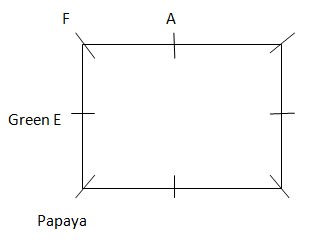 Case II: When F sits 2nd to the right of the one who likes Papaya.
Case II: When F sits 2nd to the right of the one who likes Papaya. 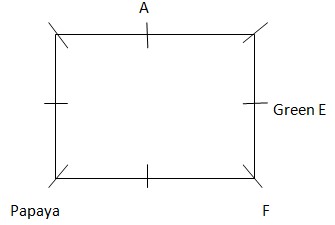 G sits opposite to the one who likes Black. G is an immediate neighbor of the one who likes Apple. Case I: When F sits 2nd to the left of the one who likes Papaya.
G sits opposite to the one who likes Black. G is an immediate neighbor of the one who likes Apple. Case I: When F sits 2nd to the left of the one who likes Papaya. 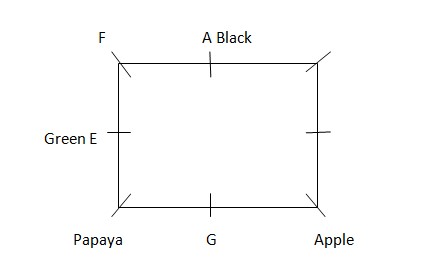 Case II: When F sits 2nd to the right of the one who likes Papaya.
Case II: When F sits 2nd to the right of the one who likes Papaya. 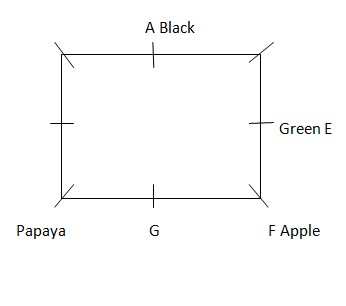 D sits to the immediate left of B. The one who likes White sits to the immediate right of the one who likes Grapes, which is not possible in case I so, case I is invalid. H sits second to the right of C who likes Banana. The final arrangement is as follows:
D sits to the immediate left of B. The one who likes White sits to the immediate right of the one who likes Grapes, which is not possible in case I so, case I is invalid. H sits second to the right of C who likes Banana. The final arrangement is as follows: 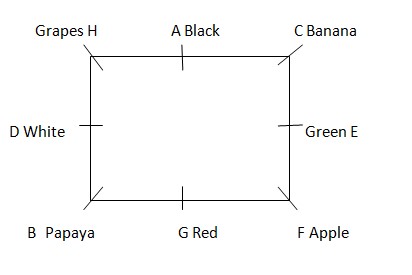
Which one of the following is an example of concentrated organic manure?
A statement of anticipated results during a designated time period expressed in financial terms – as revenue, expense and capital budgets or non-...
Name the physiological disorder in mango in which fruit looks normal from outside, but fleshy and spongy from inside, sour in taste:
Retting in jute is best done at the temperature of:
There are four stages in the functional growth of a market. Match the correct options:
Which of the following is a macronutrient essential for plant growth?
The estimate of degree of variation in a phenotypic trait in a population that is due to genetic variation between individuals in that population is ca...
Destructive Insects and Pests Act in India came into operation in ____
Integrated scheme for Agriculture marketing was launched in which year?
Curled toe disease in poultry is caused by the deficiency of which vitamin?